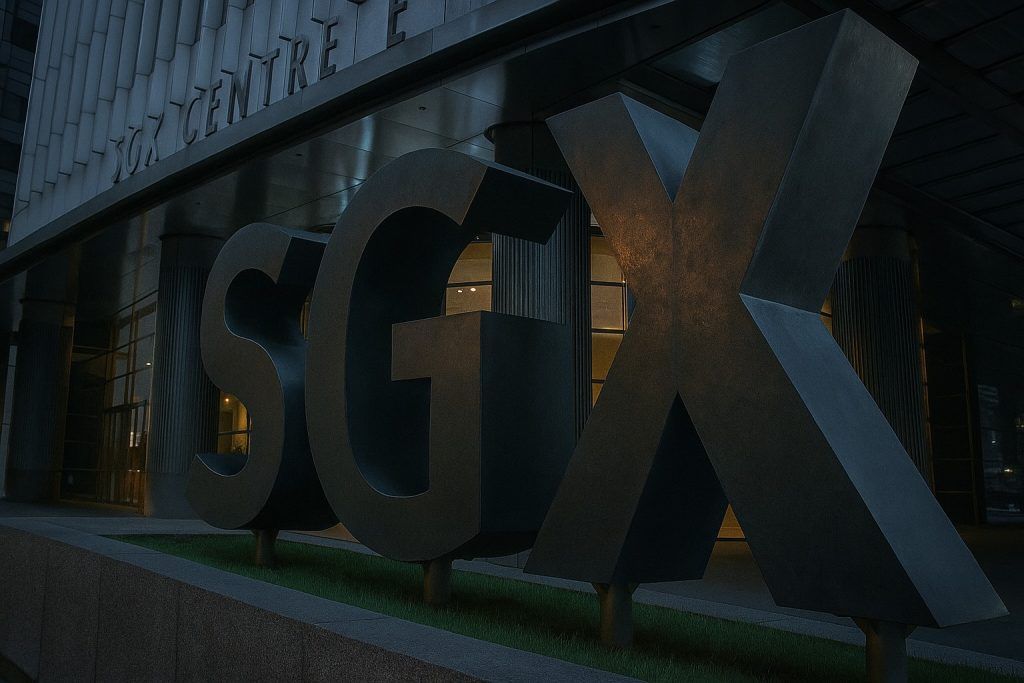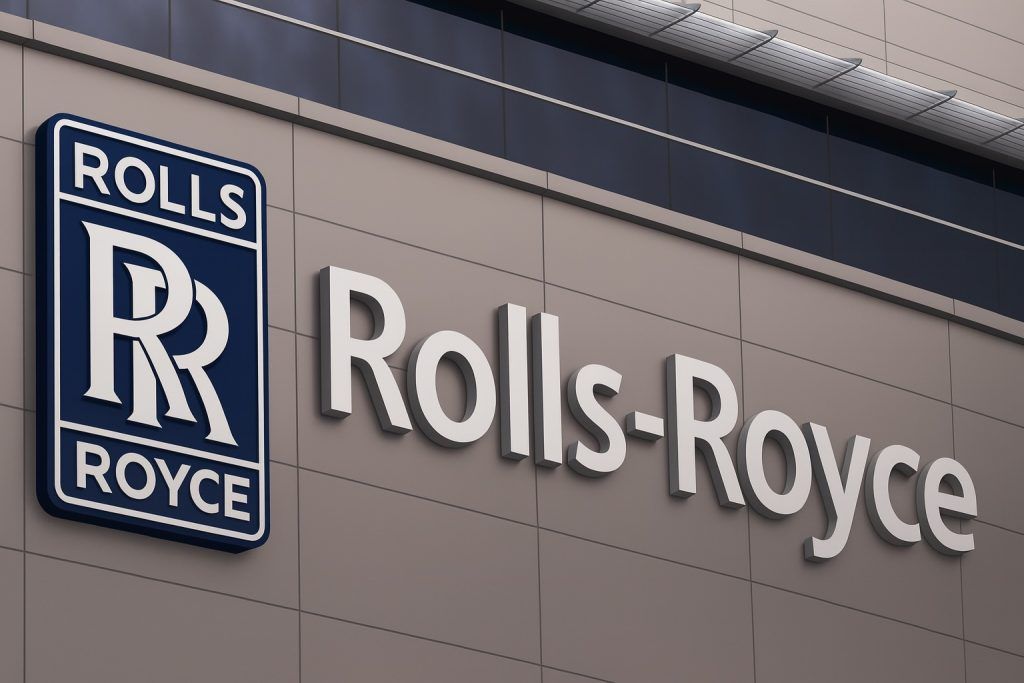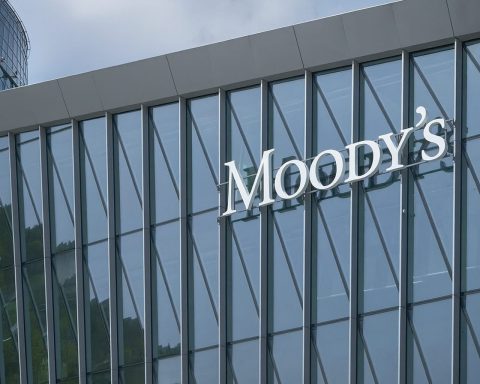LONDON – 20 November 2025 – BP plc (LSE: BP.) finished Thursday’s session modestly higher, as investors balanced fresh headlines about a major U.S. pipeline shutdown against the group’s strong cash generation, hefty dividend and long‑dated growth projects in the Gulf of Mexico.
According to closing data from Hargreaves Lansdown, BP shares ended the London session at around 457.7p (bid 457.65p / offer 457.75p), up 2.1p on the day – a gain of roughly 0.46% versus Wednesday’s 455.60p close. Intraday, the BP share price traded between about 457.5p and 461.4p, leaving the FTSE 100 stock only a few percent below its 52‑week high near 476p. [1]
Data from the Financial Times show BP is now up almost 20% over the past 12 months, underscoring how the share price has recovered from the weakness seen in 2024, helped by activist pressure, rising oil output and aggressive share buybacks. [2]
BP share price today: key numbers (LSE: BP.)
As at close on Thursday, 20 November 2025:
- Last price (approx.): 457.7p (bid 457.65p / offer 457.75p) [3]
- Daily move: +2.10p, or +0.46% vs previous close of 455.60p [4]
- Day’s range: roughly 457.5p – 461.4p [5]
- 1‑year performance: about +19.8% [6]
- 52‑week range: approx. 329p – 476p [7]
- Market value: c. £70bn [8]
- Trailing dividend yield (UK listing): about 5.3% [9]
Short‑term, the BP share price has been moving sideways in a tight band between roughly 455p and 465p since mid‑November, after a sharp run‑up earlier in the month when the stock briefly broke above 475p. [10]
Olympic Pipeline leak dominates BP newsflow on 20 November
The main BP‑specific headline today does not come from London but from the U.S. Pacific Northwest.
Reuters reported that BP has shut down the 400‑mile Olympic Pipeline system following a fuel leak east of Everett, Washington, halting deliveries of gasoline, diesel and jet fuel to terminals across Washington and Oregon. The system is a key supply route for the region and supplies jet fuel to Seattle‑Tacoma International Airport. [11]
Key points from today’s coverage:
- BP said it initially restored one of two pipelines earlier this week to help locate the source of product discharge, but later shut that segment again after further issues were detected. [12]
- Local and national outlets note that an undetermined amount of jet fuel spilled into a drainage ditch on farmland near Everett on 11 November, prompting the original shutdown. [13]
- BP and U.S. regulators are continuing excavation and inspection work; so far, no firm timeline has been given for full restart of the system. [14]
The leak triggered direct political action today. Washington state’s governor declared an emergency to guarantee adequate fuel supplies for Seattle‑Tacoma airport, temporarily relaxing rules so fuel truck drivers can work longer hours while pipeline capacity is constrained. Multiple outlets highlighted BP Pipelines North America as the pipeline operator and emphasised Seattle‑Tacoma’s dependence on Olympic for jet fuel. [15]
Impact on BP’s share price
From a market perspective, investors currently seem to view the Olympic incident as:
- Operationally disruptive but financially manageable – BP is a global group that generated $7.8bn of operating cash flow in Q3 2025 alone, so the revenue impact from a regional pipeline outage is likely to be modest in group terms, barring major remediation or legal costs. [16]
- More of a reputational and regulatory risk – Environmental groups and local communities have vivid memories of BP‑linked spills, and today’s U.S. reporting repeatedly references the 2010 Gulf of Mexico disaster as a cautionary tale. [17]
The modest rise in the BP share price today suggests that, for now, traders see the leak as a contained issue, with attention still largely focused on oil prices, capital returns and long‑term production growth.
New deepwater contracts underline long‑term growth story
In contrast to the negative headlines around Olympic, another thread in this week’s BP newsflow is decidedly positive: the company is pushing ahead with major deepwater developments in the U.S. Gulf of Mexico (which BP now brands the “Gulf of America”).
On 18–19 November, SLB’s OneSubsea joint venture and several industry outlets announced that BP has awarded an engineering, procurement and construction (EPC) contract to OneSubsea for a subsea boosting system on the Tiber project, a deepwater greenfield development in the Gulf of America. [18]
Key details:
- The Tiber contract follows a similar subsea boosting award for BP’s Kaskida project, with both fields using the same standardized high‑pressure pump system. [19]
- BP’s Tiber‑Guadalupe hub, sanctioned in late September, will be the company’s seventh operated oil and gas production hub in the Gulf of America, with planned processing capacity of around 80,000 barrels of oil per day and first oil expected around 2030. [20]
- Using the same pump technology across multiple fields is expected to reduce costs and shorten delivery times, which should support project economics and free cash flow once production ramps up. [21]
Although these developments are long‑dated, they help underpin analysts’ view that BP can grow cash flow through the second half of the decade even as some mature assets decline – an important backdrop for today’s BP share price.
Debt reduction: $2bn notes redemption adds to deleveraging theme
Earlier this week, BP also moved to tighten its balance sheet.
On 18 November, the company announced that its subsidiary BP Capital Markets America will redeem $2bn of outstanding notes, continuing a multi‑year programme of debt reduction and hybrid bond redemptions flagged in recent quarterly results. [22]
According to BP’s Q3 2025 materials:
- The group generated $7.8bn of operating cash flow in the third quarter. [23]
- Underlying replacement cost profit (its preferred earnings metric) came in at $2.2bn, despite a tougher price environment. [24]
- Management reiterated guidance to keep capital expenditure around $14–15bn in 2025 and expects 2025 divestments to exceed $4bn. [25]
These numbers help explain why BP feels confident about redeeming debt while still funding new projects and shareholder returns, and they form an important part of the fundamental story behind today’s BP share price level.
Income investors eye BP’s dividend yield and buybacks
While the Olympic pipeline leak grabbed the headlines, a parallel media narrative over the last 24 hours has focused on BP as an income stock.
A widely‑circulated Motley Fool UK column (syndicated on Great Market Vision) highlighted that:
- BP has delivered around 18% share price growth over the past year and roughly 82% over five years, albeit with significant volatility. [26]
- The company’s dividend has been rebuilt after cuts in 2020–21, with last year’s total payout around 31.27 US cents per share. [27]
- Broker forecasts cited in the piece suggest the dividend yield could approach 6% in 2025–26, comfortably ahead of the FTSE 100 average near 3.25% (though, as always, forecasts can change). [28]
Crucially for BP’s investment case, the article also underlines management’s own guidance that 30–40% of operating cash flow is earmarked for shareholder distributions – a mix of dividends and buybacks – provided the balance sheet stays in the desired “A” credit rating range. [29]
For UK investors scanning today’s BP share price around 458p, that combination of:
- high single‑digit percentage yield (based on forecasts),
- ongoing buybacks, and
- a still‑discounted valuation versus some global peers
is a central part of the bull case – though one that remains heavily exposed to swings in oil and gas markets, as the Motley Fool piece also stresses. [30]
Analyst targets and institutional flows
On the sentiment side, there are several moving parts that investors are weighing alongside today’s modest share price gain:
- The Motley Fool / Great Market Vision article cites a median 12‑month analyst target price of about 503p for BP, implying roughly 9–10% upside from current levels, before dividends. That would translate into potential double‑digit total returns if forecasts prove accurate, but target prices are inherently uncertain. [31]
- In the U.S., MarketBeat today reported that Alteri Wealth LLC has initiated a new BP position of 7,905 NYSE‑listed shares (c. $237,000), alongside incremental buying by several other institutional investors, bringing institutional ownership to just over 11%. [32]
Earlier this year, activist investor Elliott Management disclosed a near‑5% stake in BP worth around £3.8bn and has been lobbying for a sharper focus on free cash flow, lower capital spending and potential asset disposals. Elliott’s campaign – including a push to lift annual free cash flow towards $20bn by 2027 – has been credited with helping BP’s share price recover from a steep 2024 slump. [33]
On the other side of the ledger, not all analysts are enthusiastic. Earlier in 2025, TD Cowen cut its BP rating and trimmed its U.S. price target to $36, reflecting a more cautious view on upside from here – a reminder that professional opinion remains divided. [34]
Macro backdrop: oil prices, climate policy and legal risks
The BP share price on any given day is heavily influenced by oil and gas prices and the evolving climate policy landscape:
- Recent commentary notes that Brent crude has been hovering in the $60–65 per barrel range on speculation of further OPEC+ supply cuts, after wobbling below $60 earlier in the month. However, Goldman Sachs now expects a 2m barrels‑per‑day global surplus by 2026 and forecasts average Brent prices nearer $56 next year, a scenario that would put pressure on profits if realised. [35]
- For now, analysts estimate BP can break even at oil prices around $40 per barrel, but a prolonged downturn anywhere near that level would likely weigh on earnings, cash flow and, ultimately, the share price. [36]
Meanwhile, legal and political risks around hydrocarbons remain front and centre:
- A lawsuit filed by multiple U.S. environmental groups today seeks to stop a planned sale of 80 million acres of Gulf of Mexico oil and gas leases, arguing that the government has not properly assessed environmental impacts under the National Environmental Policy Act. The case explicitly references the 2010 BP Deepwater Horizon spill as a warning of potential damage. [37]
- Coverage quotes campaigners warning that more offshore drilling is a “recipe for more spills, more carbon pollution, and more damage to coastal communities and marine life” – sentiment that underscores the reputational headwinds facing companies like BP even as they invest in new Gulf of America projects such as Tiber‑Guadalupe. [38]
Taken together, today’s BP share price reflects a tug of war between:
- attractive near‑term cash returns and long‑term deepwater growth projects, and
- ongoing environmental, legal and commodity‑price risks.
What to watch after today for BP shareholders
Looking beyond the 457–458p closing level on 20 November 2025, several factors are likely to drive the next leg of the BP share price:
- Olympic Pipeline resolution
- Timeline for repairs, clean‑up costs and any regulatory penalties or lawsuits related to the Washington state leak. [39]
- Oil & gas prices and OPEC+ decisions
- Actual supply‑demand dynamics versus bearish forecasts such as Goldman’s surplus call, and how that filters through to BP’s realised prices. [40]
- Execution on Gulf of America projects
- Progress on Tiber‑Guadalupe and Kaskida, and whether standardised subsea technology delivers the promised cost and schedule benefits. [41]
- Capital returns and balance sheet
- The pace of buybacks, future dividend decisions and further debt redemptions, especially in light of activist pressure from Elliott and others. [42]
- Regulatory and ESG developments
- Outcomes of Gulf of Mexico leasing litigation and any new climate‑policy measures affecting offshore developments. [43]
Final word: today’s BP share price in context
On 20 November 2025, BP’s modest rise to around 458p suggests that equity markets are taking the Olympic Pipeline leak in stride, focusing instead on the group’s robust Q3 cash generation, chunky dividend, ongoing buybacks and long‑term deepwater growth plans.
At the same time, the day’s newsflow – from emergency declarations in Washington state to environmental lawsuits over Gulf of Mexico leasing – is a pointed reminder that BP remains a high‑beta play on both energy markets and energy politics.
As always, this article is informational only and not investment advice. Share prices, yields and analyst forecasts can change rapidly, and anyone considering BP shares should check up‑to‑date market data and do their own research (or seek professional advice) before making investment decisions.
References
1. www.hl.co.uk, 2. markets.ft.com, 3. www.hl.co.uk, 4. www.hl.co.uk, 5. www.hl.co.uk, 6. markets.ft.com, 7. www.hl.co.uk, 8. www.hl.co.uk, 9. www.hl.co.uk, 10. www.investing.com, 11. www.reuters.com, 12. www.reuters.com, 13. www.kuow.org, 14. www.reuters.com, 15. www.middletownpress.com, 16. www.stockinsights.ai, 17. www.wusf.org, 18. www.slb.com, 19. www.worldoil.com, 20. jpt.spe.org, 21. www.worldoil.com, 22. www.bp.com, 23. chemxplore.com, 24. www.stockinsights.ai, 25. chemxplore.com, 26. greatmarketvision.com, 27. greatmarketvision.com, 28. greatmarketvision.com, 29. greatmarketvision.com, 30. greatmarketvision.com, 31. greatmarketvision.com, 32. www.marketbeat.com, 33. www.ft.com, 34. au.investing.com, 35. greatmarketvision.com, 36. greatmarketvision.com, 37. www.wusf.org, 38. www.wusf.org, 39. www.reuters.com, 40. greatmarketvision.com, 41. www.slb.com, 42. www.reuters.com, 43. www.wusf.org









